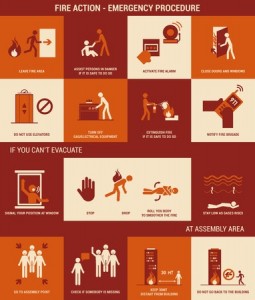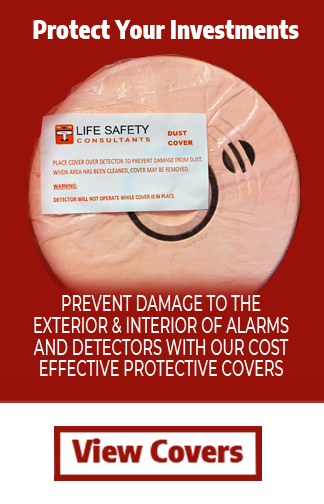Fires can happen anywhere. All it takes is one faulty system, one human error, and a fire can ignite instantly. A lot of employers are not aware of the unforeseen problems that can lead to a fire, and because of that, there should be a functional plan in place should a fire ever break out.
OSHA oversees the safety regulations set forth for businesses to ensure that health and safety measures are taken seriously by business owners. Not only does having a fire prevention plan in place protect lives, it also protects the business.
Industrial plants in particular, are very vulnerable to fires. Heavy machinery, flammable chemicals and waste products, extensive electrical systems, as well as a high volume of people all contribute to the possibility of a fire outbreak. When OSHA performs their inspections, it is found that many plants violate or have completely omitted the standards for fire safety.
The most common violations made within the plant industry that resulted in a fire include:
- Locked and obstructed doors
- Un-marked or lack of marking exits
- Travel distances to exits is excessive
- The absence of a fire alarm
- No emergency action plan, fire prevention plan, and no automatic fire suppression plan
There are four components to OSHA’s workplace fire safety standards: exits, emergency escape routes, fire extinguishers, and emergency plans. Not only should a fire plan be developed, all employees need to be properly trained as well as having the plans posted throughout the premise.
To fully understand what is required by OSHA when it comes to fires in the industrial environment, here is a breakdown:
Exits and emergency escape routes: 
- At least 2 exits doors or other means of escaping are required
- Fire doors are to be kept clear from the inside when employees are in the building as well as be unlocked
- Fire exit routes must be clearly marked with exit signs and be free of clutter
Fire extinguishers:
- If employees are required to fight small fires, the right type of extinguisher needs to be available and up to date. A proper fire extinguisher has to approved for the type of fire hazards in the plant, maintained, and routinely inspected.
- For the employees to use the fire extinguisher, they must be trained about the hazards of fighting a fire, learn how to operate the fire extinguishers, and the protocol for alerting other employees of the fire emergency.
Emergency Plans:
When a fire has gotten out of control and is threatening lives, an emergency plan needs to be written and reviewed with all employees.
The emergency plan needs to state:
- The designated evacuation routes
- What procedure is in place for accounting for all evacuated employees
- What are the responsibilities and procedures for shutting down critical operations and who is to perform rescue and medical duties
- A way for alerting employees to the fire emergency (via voice communication, bells, or horns)
- A chain of command for who to turn to for additional information
- Procedures for storing and cleaning up flammable materials and waste
- Controlling ignition sources from smoking, welding, and burning
- How to maintain and clean heat-producing equipment of burners and ovens
Fire prevention plans are absolutely critical for alerting the fire department and ensuring all staff are informed of what to do in a fire. An emergency signal should also be created and taught to the work staff.
Lastly, a fire suppression system is also needed for improving fire safety in the work environment. An example of a fire suppression system is a sprinkler system. This system will do three things: detect a fire, sound the fire alarm, and put water or suppression agent where the fire is located.
These fire suppression systems do require routine maintenance. If a problem within the system occurs, there needs to be a subsequent plan in place for overseeing the premises for fire detection.
If you notice that your fire suppression system or fire detecting system is faulty or not working at all, you will want to act quickly for determining the problem and getting it fixed by a professional. An incorrect “repair” can provide a much larger problem than the faulty system itself.
At Life Safety Consultants, it is our job to assist others with obtaining the proper replacement parts for any and all fire detection systems. Our experts have the knowledge you need for getting the right parts to maintain a functioning fire suppression system. Repairing and restoring a system already wired into the building can save thousands of dollars in labor and installation costs, without circumnavigating safety precautions. We provide those hard to find and discontinued parts, to easily repair the original system to eliminate the need for system replacement. If you are unsure of what parts are needed or what is wrong with the system, be sure to contact Life Safety Consultants today.


